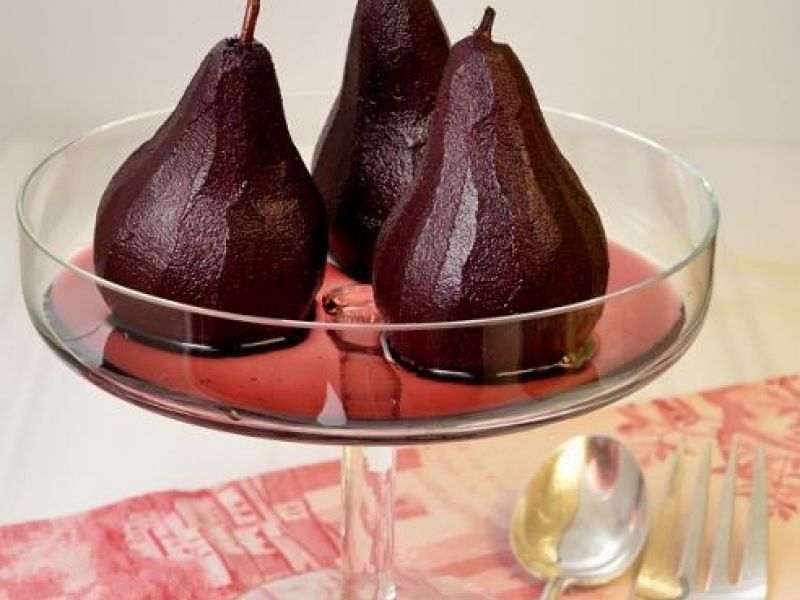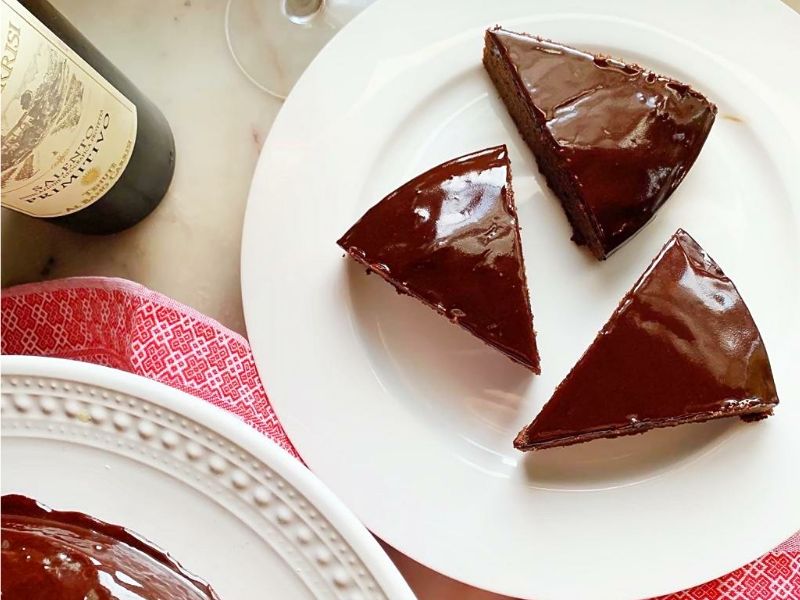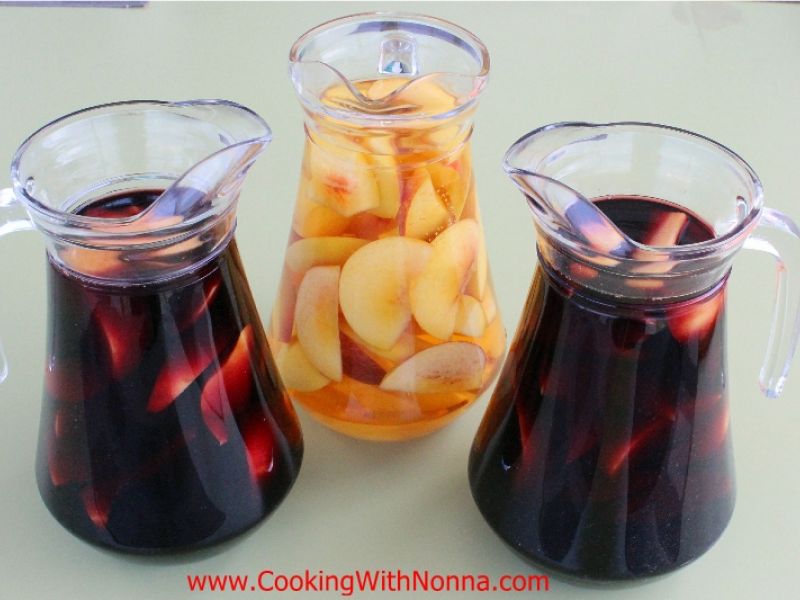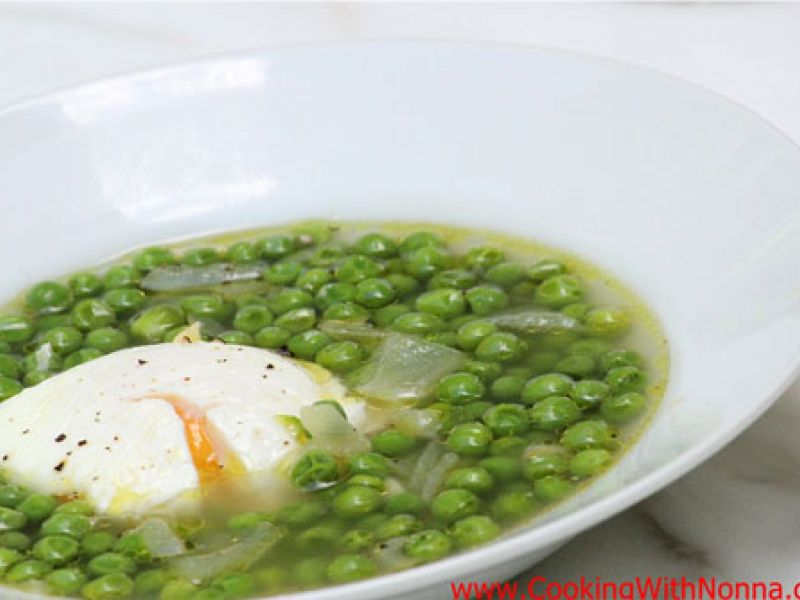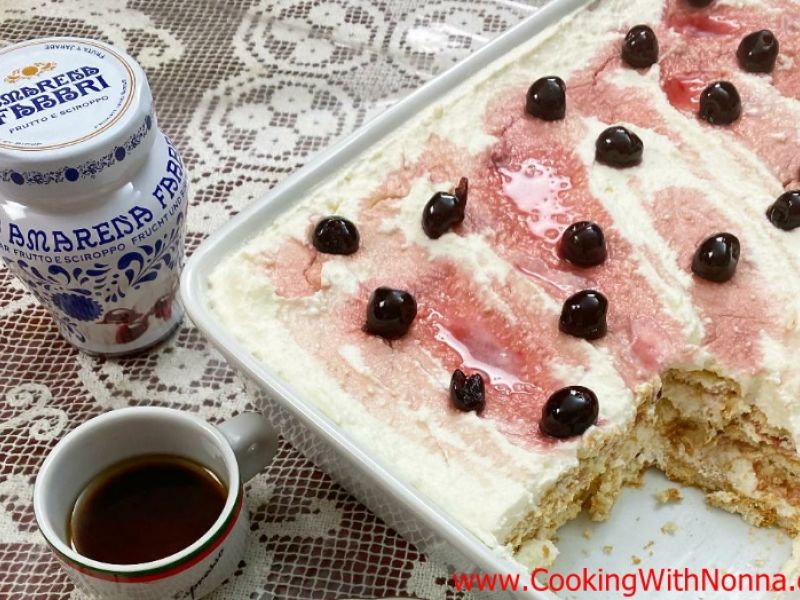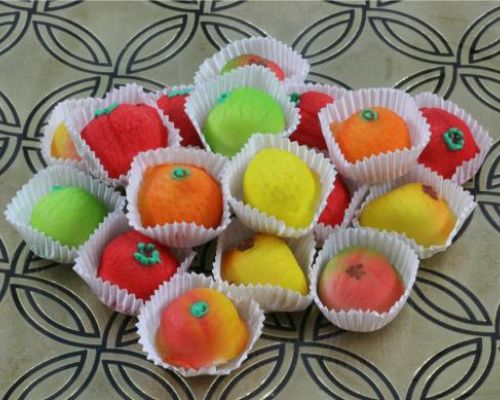Pears Poached in Red Wine
Pere Martine al Vino Rosso - Pears Poached in Red Wine is one of the most elegant and light desserts I can think of. Served whole, halved or sliced, these pears delight family and guests. Bosc and D’Anjou are the pears most often recommended for poaching, but Bartletts, red d’Anjou and Comice are my favorites. Select firm, unblemished and slightly under ripe fruit. Pay special attention to the stems of the fruit you buy; look for nicely formed ones, and be certain they are firmly attached.
Ingredients
For 4 Person(s)
For the Pears:
- 4 pears
- 1 bottle red wine, such as Sagrantino or Barolo
- 1 cup water
- 1 cup granulated sugar
- 1 6 inch cinnamon stick
- 1 vanilla bean, split, seeds scraped into poaching liquid
- 2 star anise
- 1 lemon for acidulated water to use while peeling pears
Directions
- Cut a piece of parchment the diameter of the saucepan, and cut a ½ inch circle out of the center to release steam. Set aside.
- Add wine, water, sugar, cinnamon stick, vanilla bean and star anise to 4 quart saucepan. Place over medium heat, stirring occasionally until sugar has dissolved and mixture has come to a boil. Reduce heat to very gentle simmer.
- Meanwhile prepare fruit. If you plan to serve the pears whole, cut a slice off the bottom to provide a stable platform if they will not stand on their own.
- You may omit this step if you plan to serve pears halved lengthwise, fanned or sliced.
- Draw the vegetable peeler down the fruit to peel, being careful to leave the stem intact, especially if you plan to serve the fruit whole.
- If you will be poaching halves of pears, cut out tough inner core and scoop out seed pocket using a melon baller.
- As you work place prepared pears in a bowl of cool water into which you have squeezed the juice of 1 lemon. This acidulated water will prevent the fruit from oxidizing.
- Gently place fruit in the simmering poaching liquid, and cover with the circle of parchment. The liquid may not completely cover the fruit. Not to worry. That’s what the parchment is for.
- Carefully turn the fruit every few minutes, reaching under the parchment with a rubber spatula or other soft tool, taking care not to nick the pears, keeping the liquid at the barest simmer.
- Pears should be ready at about 25 to 40 minutes. To check for doneness, insert a sharp paring knife into the bottom of the fruit. It should slide in with a minimum of resistance.
- Remove from heat and transfer pears to glass bowl. Pick them up carefully - they are easily dropped.
- Pour poaching syrup over pears, making certain they are submerged.
- Place fresh parchment over pears, and cover tightly to avoid picking up refrigerator odors.
- Refrigerate up to 48 hours.
- To serve pears: over medium heat reduce poaching liquid to a syrupy consistency.
- Pour Crema d'Inghliterra in a pool on serving plate. Position a whole or half pear on plate.
- To decorate a plate like the one shown in the Crema d'Inghliterra recipe, drop dots of reduced poaching syrup evenly just inside the edge of the crema. Draw a paring knife through dots in one continuous circular motion, connecting them all to form a ring of hearts.
- If you do not wish to attempt the ring of hearts, you may drizzle the poaching liquid over the pears and crema.
- Serve at once!
Advertisement
Recipe Notes
Related recipe: Crema d'Inghliterra Poached Pears and Cream D'Inghliterra are really a cook's best friend. The pears can be made up to 2 days ahead and the crema up to 3 days ahead. Perfect if you are planning a dinner party! A general note about poaching pears or any fruit; the poaching liquid can be anything you like - white wine, red wine, Port or fruit juice, but it will always be sweetened with sugar. In fact, fruit is often poached in simple syrup alone. The poaching liquid itself can be flavored with vanilla bean, citrus zest, cinnamon sticks, cloves, allspice, star anise or other spices. Handle the pears with care - they can be slippery! Buon appetito!

